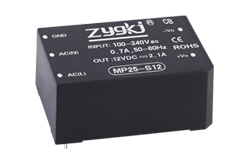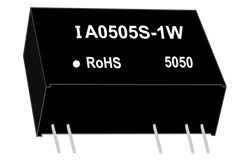الإخبارية
Exploring the Electric Power Series: Uncovering the Wonders of Electricity
المؤلف : ZYG Power Module Time: 2023-8-26
Electricity is an integral part of our daily lives, powering our homes, devices, and industries. It has become such a fundamental necessity that we often take it for granted. However, behind the flick of a switch lies a fascinating world of science and innovation. In this article, we will delve into the wonders of electricity and explore the electric power series that drives our modern society.
At its most basic level, electricity is the flow of electric charge. This charge is carried by tiny particles called electrons, which exist in all matter. The movement of these electrons creates an electric current, and it is this flow of charges that powers our lives. But how exactly does electricity work?
The fundamental concept behind electricity is based on the behavior of atoms. Every atom consists of a nucleus, containing positively charged protons and neutral neutrons, surrounded by negatively charged electrons. Normally, atoms have an equal number of protons and electrons, making them electrically neutral. However, when electrons are stripped away or added to an atom, it becomes positively or negatively charged, respectively.
Electricity is generated when a potential difference, or voltage, is created between two points. This voltage can be produced by various means, such as chemical reactions, magnetism, or mechanical motion. Once the voltage is established, it pushes the electrons from a region of negative charge (the source) towards a region of positive charge (the load). This flow of electrons is what we commonly refer to as an electric current.
The electric power series is a term used to describe the different sources and forms of electricity. The series begins with the primary sources of electricity generation, such as fossil fuels, nuclear energy, and renewable sources like solar and wind. These sources are used to produce electricity on a larger scale through power plants.
Power plants generate electricity by converting a primary energy source into mechanical energy. For example, in a coal-fired power plant, coal is burned to heat water and produce steam. The steam then drives a turbine, which spins a generator to produce electricity. Similarly, in a nuclear power plant, the heat generated by nuclear reactions is used to produce steam and generate electricity.
Once electricity is generated, it is transmitted through an extensive network of power lines, transformers, and substations. This transmission system ensures that electricity reaches homes, businesses, and industries. However, before it can be used by consumers, the electricity goes through a process called distribution. Distribution involves stepping down the voltage through distribution transformers, making it safe for consumption.
At the consumer level, electricity powers a wide range of devices and appliances. From lighting up our homes to charging our smartphones, electricity is a vital part of our everyday lives. It also plays a critical role in industries, powering machinery, production lines, and facilitating technological advancements.
Electricity has paved the way for countless innovations and advancements. It has revolutionized transportation with electric vehicles, making them a sustainable alternative to fossil fuel-powered cars. Additionally, the development of renewable energy sources has led to a greener and more environmentally friendly approach to electricity generation.

As we rely more on electricity, it becomes crucial to use it efficiently and responsibly. Energy conservation and sustainability are essential to ensure a reliable and environmentally friendly power supply. This can be achieved through practices such as using energy-efficient appliances, adopting renewable energy sources, and promoting awareness about responsible energy consumption.
The electric power series is a fascinating exploration of the wonders of electricity. From its basic principles to its generation, transmission, and utilization, electricity plays a significant role in powering our daily lives and driving our modern society. Understanding the science behind electricity and adopting sustainable practices will pave the way for a brighter and more sustainable future.
سابق: DM Series DC DC Power Supply manufacture
التالي: China ZP Series: A Powerful AC DC Converter for All Your Energy Conversion Needs
معلومات ذات صلة
-
2023-10-13
DC to DC Power Supply Module: An Efficient Solution for Power Conversion
The demand for efficient power conversion solutions has never been higher. As electronic devices become more advanced and power-hungry, it is crucial to find ways to convert power effectively and reliably. One such solution that has gained popularity is the DC to DC power supply module. A DC to DC power supply module is a compact electronic device that converts one DC voltage level to another, efficiently transferring power from a source to a load. This module plays a vital role in many applications, including telecommunications, automotive electronics, industrial equipment, and renewable energy systems. One of the primary advantages of using a DC to DC power supply module is its high efficiency. Traditional linear voltage regulators can waste a significant...
عرض التفاصيل -
2023-6-29
120V AC to 12V DC Converter: Power Conversion Made Easy
Introduction: In today's digital age, electronic devices have become an indispensable part of our lives. From smartphones to laptops, these devices rely on a stable power supply to function effectively. However, the power requirements for these devices can vary significantly. While some devices operate on 120V AC (alternating current) power supply, others require 12V DC (direct current) power for optimal performance. To bridge this gap and ensure seamless power conversion, the 120V AC to 12V DC converter has emerged as a reliable and efficient solution. In this article, we will explore the functionality, applications, and benefits of this converter. Functionality: The 120V AC to 12V DC converter is a power conversion device that converts alternating current (AC) into direct current...
عرض التفاصيل -
2023-5-9
AC-DC Power Supply: Key Components and Applications
AC-DC power supplies are essential components in many electronic devices, ranging from small battery-powered gadgets to large industrial equipment. They convert AC power from mains or other sources into DC power that can be used to operate electronic circuits. In this article, we will discuss the key components of AC-DC power supplies and their applications. Key Components of AC-DC Power Supplies 1. Transformer: The transformer is the heart of an AC-DC power supply, as it converts the AC voltage from the mains or other sources to the required DC voltage level. A transformer consists of two or more coils of wire wrapped around a magnetic core, which allows the transfer of energy from one coil to another through magnetic induction....
عرض التفاصيل -
2023-6-11
Bidirectional DC-DC Converter: A Versatile Power Conversion Solution
In recent years, renewable energy sources such as solar panels and wind turbines have become increasingly popular due to the growing concern over climate change and the depletion of fossil fuels. However, these sources of energy are often intermittent and require energy storage systems to ensure a reliable and constant supply of electricity. Bidirectional DC-DC converters have emerged as a versatile and efficient solution for energy storage and power conversion in renewable energy systems. A bidirectional DC-DC converter is a power electronic device that converts DC power from one voltage level to another, while also allowing power to flow in both directions. This means that it can charge a battery or energy storage system by converting power from a solar...
عرض التفاصيل -
2023-5-18
Efficient AC to DC Converter: Transforming 120V AC to 12V DC with Superiority
Introduction: Converting AC (alternating current) to DC (direct current) is crucially important for various electronic devices to function properly as most electronics run on DC supply. The majority of commonly used electronic devices operate on 12V DC. Therefore, transforming 120V AC to 12V DC has significant importance in the technical world. An efficient AC to DC converter reduces wastage of energy and improves the performance and longevity of the electronic device. The AC to DC conversion process affects the circuit performance, security, and environmental factors. In this article, we will be discussing efficient AC to DC converters and how they could serve numerous industries by transforming typical 120V AC to 12V DC with superiority. Efficiency: Efficiency is crucial in identifying...
عرض التفاصيل -
2023-4-12
Title: Understanding AC-DC Converters: A Beginner Guide
AC-DC converters, also known as rectifiers, are electronic devices that convert alternating current (AC) into direct current (DC). They are commonly used in a wide range of applications, including power supplies for electronic devices, motor drives, and renewable energy systems. In this beginner guide, we will explain the basic principles behind AC-DC converters and discuss some of their common types. Principle of AC-DC Conversion The basic principle behind AC-DC conversion is to use a rectifying circuit that converts the AC signal into a pulsating DC signal. The rectifying circuit consists of one or more diodes that allow the flow of current in only one direction. The output of the rectifying circuit is then filtered using a capacitor, which smooths out...
عرض التفاصيل


















